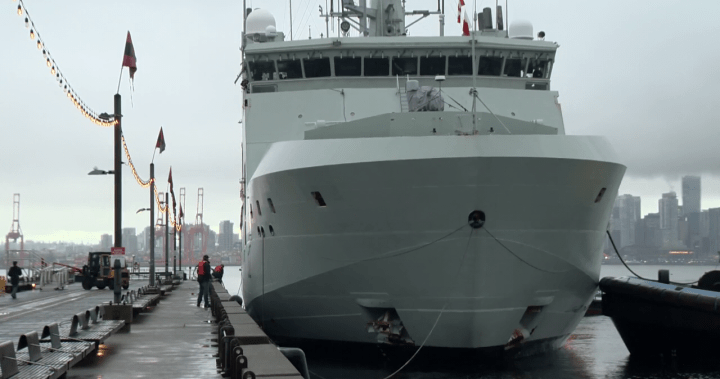The HMCS Max Bernays is the first of Canada’s new class of Arctic and Offshore Patrol Vessels to join the country’s Pacific fleet. The 103-metre, ice-capable ship is part of the Harry DeWolf-class AOPVs, with a total of six planned under the National Shipbuilding Strategy. The vessel can be deployed with various payloads, including shipping containers, underwater survey equipment, and landing craft. It also has a vehicle bay that can hold pickup trucks, all-terrain vehicles, and snowmobiles. Cmdr. Nadia Shields, the commanding officer of the HMCS Max Bernays, described the vessel as a ‘pickup truck’ due to its versatility and capabilities.
Despite having a smaller crew compared to similar-sized ships, the HMCS Max Bernays is equipped with redundancies and cutting-edge autonomous technology. It can handle various tasks typically assigned to the navy, such as humanitarian or interdiction missions. Additionally, the vessel is the only one in the navy rated for first-year sea ice in the Arctic. Cmdr. Shields emphasized the importance of maintaining a presence in the Arctic as climate change affects the polar ice caps. She highlighted the need for Canada to monitor its Arctic waters in light of developments by both friends and adversaries, as well as the increasing presence of fishing fleets in the region.
The HMCS Max Bernays was constructed in Halifax and departed for deployment to its new home port at Esquimalt. However, its deployment has faced challenges, including flooding and mechanical issues while participating in an international exercise over the summer. As a result, the vessel had to dock at Pearl Harbour for repairs. Despite these setbacks, the ship is named after Max Bernays, an acting chief petty officer aboard HMCS Assiniboine, who successfully sank a submarine during the Battle of the Atlantic in 1942. The vessel’s name honors Bernays’ bravery and contributions to the navy.
As part of Canada’s efforts to maintain a presence in the Arctic, the HMCS Max Bernays plays a crucial role in safeguarding the country’s interests in the region. Cmdr. Shields highlighted the evolving capabilities of both allies and adversaries in the Arctic, emphasizing the need for Canada to assert its authority over its arctic waterways. As the polar ice caps continue to diminish due to climate change, the importance of monitoring the Arctic becomes increasingly vital. The vessel’s advanced capabilities enable it to operate in challenging environments, including first-year sea ice in the Arctic, enhancing Canada’s ability to fulfill its maritime missions effectively.
Overall, the HMCS Max Bernays represents a significant addition to Canada’s naval fleet, showcasing the country’s commitment to protecting its interests in the Arctic and offshore regions. The vessel’s versatile capabilities, including its ability to carry different payloads and operate in harsh conditions, make it a valuable asset for maritime operations. Despite facing initial challenges during its deployment, the vessel’s namesake, Max Bernays, symbolizes the legacy of courage and dedication within the Canadian navy. As Canada continues to navigate the changing landscape of the Arctic, vessels like the HMCS Max Bernays will play a vital role in safeguarding the country’s maritime interests and asserting its authority in the region.


